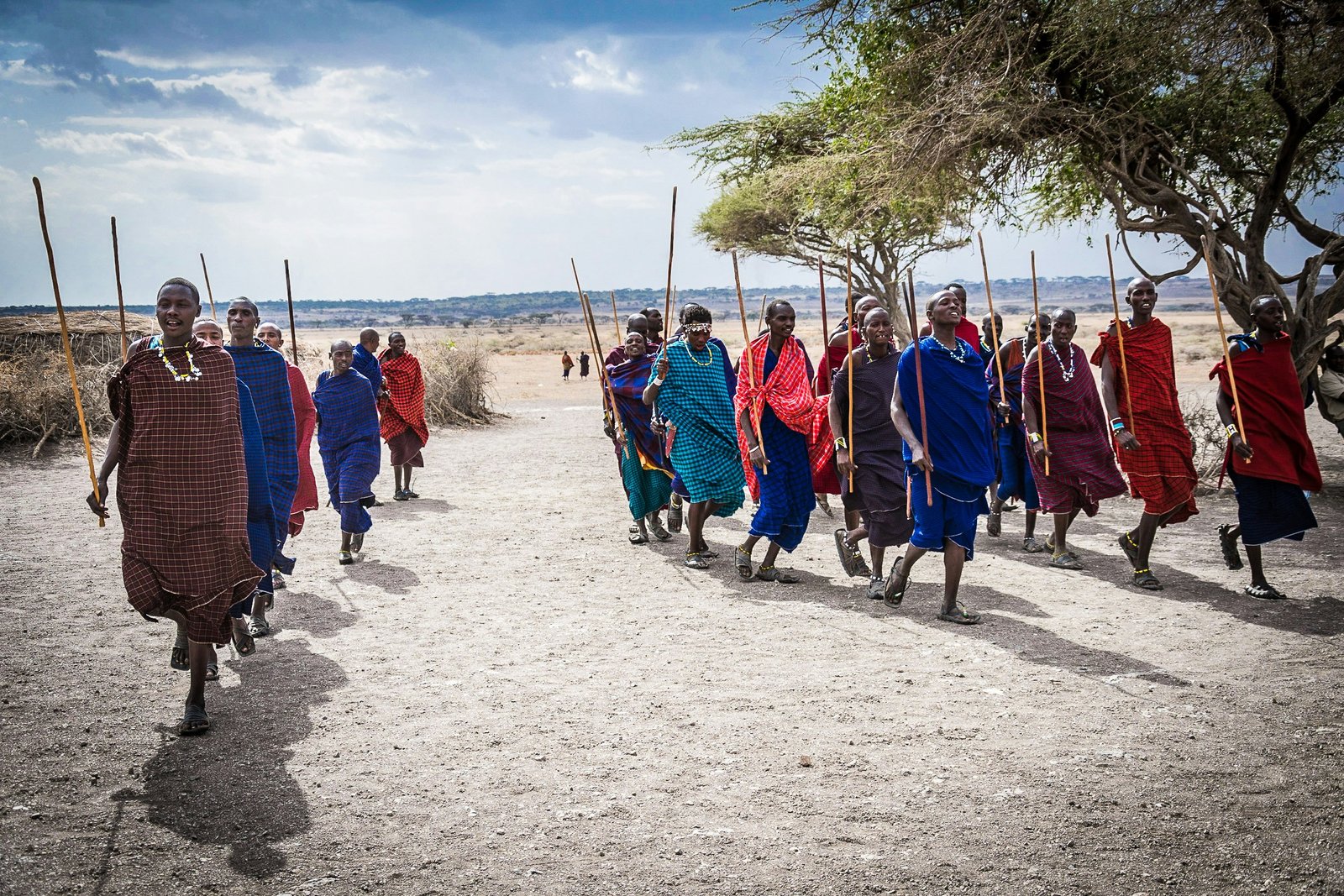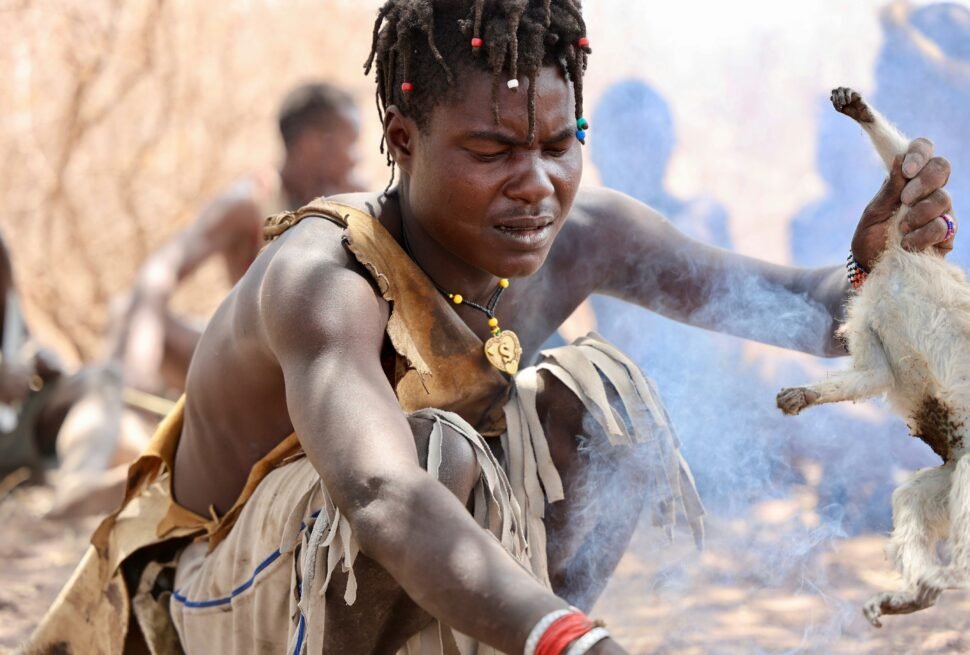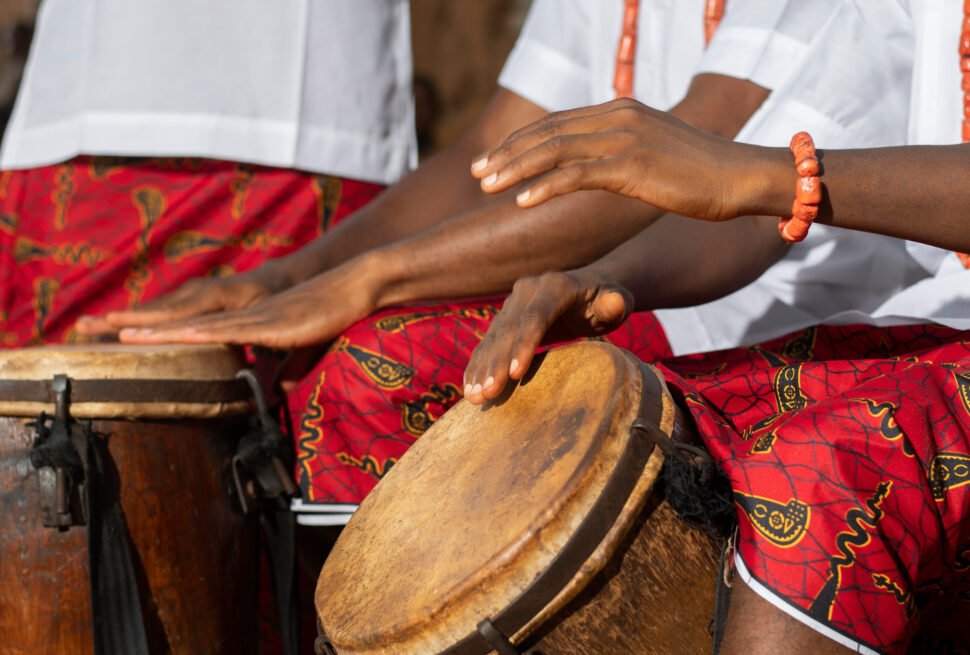Table of Contents
Introduction
While its world-famous wildlife attracts travelers from across the globe, Tanzania’s rich cultural heritage is an equally fascinating treasure waiting to be explored. The country is home to over 120 ethnic groups, each with unique traditions, languages, and ways of life that have been preserved for centuries.
Beyond the thrill of spotting the Big Five on safari, immersing yourself in Tanzania’s diverse cultures offers a deeper, more meaningful connection to this incredible land. From the Maasai warriors, known for their vibrant red robes and traditional jumping dance, to the Chagga farmers who have cultivated the fertile slopes of Kilimanjaro for generations, each tribe has a distinct story to tell. The Hadzabe hunter-gatherers live off the land as their ancestors did, while the Swahili people of the coast carry the legacy of centuries-old trade with Arabia and Persia.
This article takes you on a journey through six of Tanzania’s most fascinating tribes, exploring their history, customs, and where you can experience their traditions firsthand. Whether you’re a cultural enthusiast or a traveler looking to enrich your safari experience, discovering Tanzania’s tribal heritage will leave you with unforgettable memories.
The Maasai – The Fearless Warriors of the Savannah
Who Are the Maasai?
The Maasai are one of East Africa’s most iconic tribes, known for their semi-nomadic lifestyle and deep-rooted warrior traditions. They inhabit the vast plains of northern Tanzania and southern Kenya, where they herd cattle, which they consider the ultimate symbol of wealth and survival. Instantly recognizable by their bright red robes (shúkà), intricate beadwork, and tall, lean physiques, the Maasai have preserved their cultural identity despite modernization.
Cultural Traditions & Way of Life
For the Maasai, cattle are central to life, serving as both a food source and a status symbol. Wealth is measured not by money but by the number of cattle a man owns. Traditionally, Maasai men are warriors and herders, while women handle household duties and beadwork.
A key element of Maasai society is the Moran tradition, where young men undergo rigorous initiation rites, including circumcision without anesthesia, to prove their strength and bravery. Once initiated, they enter the warrior class and spend years protecting the community and livestock.
The Maasai are also famous for their Adumu (jumping dance), a high-energy ritual performed during ceremonies. Their marriage customs allow polygamy, and arranged marriages are common, with bride wealth paid in cattle. Despite external influences, many Maasai continue to practice their ancestral traditions, maintaining their distinct identity.
Where to Experience Maasai Culture
For an immersive experience, visit the Ngorongoro Conservation Area, where traditional Maasai bomas (villages) showcase their way of life. In the Serengeti and Amboseli, visitors can interact with Maasai warriors, witness cultural performances, and even participate in traditional rituals. Many eco-lodges offer guided tours with Maasai hosts, providing insights into their daily lives, customs, and ancient survival skills in the African wilderness.
The Chagga – The Industrious Farmers of Kilimanjaro
Who Are the Chagga?
The Chagga people are one of Tanzania’s most prosperous and well-established ethnic groups, residing on the fertile slopes of Mount Kilimanjaro. Known for their strong work ethic and agricultural expertise, they have historically been among the most economically successful tribes in Tanzania. Their wealth and influence have grown due to coffee cultivation, banana farming, and advanced irrigation techniques, which have sustained their communities for generations.
Cultural Traditions & Way of Life
Agriculture is the foundation of Chagga life, with coffee and bananas being their primary crops. The Chagga were among the first in Tanzania to adopt cash crop farming, leading to their economic prosperity. Their sophisticated irrigation systems, built using natural streams and channels, have supported their farms for centuries, ensuring year-round food security.
Historically, the Chagga faced frequent raids from the Maasai, which led them to construct underground caves for protection. These caves, still accessible today, are a testament to their resilience and strategic thinking.
The Chagga have a patrilineal society, where inheritance and leadership follow the male lineage. Traditional leadership was once divided among small chiefdoms, but today, their communities blend modern education and business ventures with their rich cultural heritage.
Where to Experience Chagga Culture
Travelers can visit the Marangu and Machame villages, where traditional Chagga homes and underground caves can be explored. For a hands-on experience, Kilimanjaro Coffee Tours offer an opportunity to see Chagga farmers at work, learn about coffee processing, and even participate in roasting and brewing fresh Kilimanjaro coffee straight from the source.
The Hadzabe – Tanzania’s Last Hunter-Gatherers
Who Are the Hadzabe?
The Hadzabe are an indigenous group living near Lake Eyasi in northern Tanzania. They are one of Africa’s last surviving hunter-gatherer societies, maintaining a traditional lifestyle that has remained largely unchanged for centuries.
Cultural Traditions & Way of Life
The Hadzabe practice a nomadic lifestyle, hunting with bows and poisoned arrows to catch game such as birds, small mammals, and wild plants. Their language is a form of click language, similar to those spoken by the Khoisan people in southern Africa. The Hadzabe are an egalitarian society, with no leaders or formal hierarchies. They have a deep knowledge of the natural world, relying on their understanding of the land, plants, and animals for survival. Their way of life is built around survival skills passed down through generations, which include foraging and hunting techniques tailored to their environment.
Where to Experience Hadzabe Culture
Visitors can experience the Hadzabe’s unique way of life near Lake Eyasi, where they offer hunting expeditions and foraging lessons, allowing travelers to learn firsthand about their traditional skills and practices.
The Datoga – Tanzania’s Skilled Blacksmiths
Who Are the Datoga?
The Datoga are semi-nomadic pastoralists and expert blacksmiths who live near the Hadzabe. They are known for their metalworking skills and have a strong tradition of creating tools, weapons, and jewelry.
Cultural Traditions & Way of Life
Cattle herding is a central aspect of Datoga culture, where livestock represents wealth and social status. The Datoga are renowned for their blacksmithing abilities, forging intricate knives, spears, and jewelry from metal. They are also known for their facial tattoos, which serve as both beauty marks and symbols of identity. These tattoos are typically passed down through generations and are a sign of maturity and adulthood. The Datoga maintain a nomadic lifestyle, moving with their herds to find grazing land.
Where to Experience Datoga Culture
Visitors can explore Datoga culture at Lake Eyasi, where blacksmith workshops provide a unique opportunity to observe their metalworking skills and traditional craftsmanship.
The Swahili – Traders of the Indian Ocean
Who Are the Swahili?
The Swahili are a coastal ethnic group with a unique blend of African, Arab, and Persian influences. Historically, they have been key players in the Indian Ocean trade routes, connecting Africa with the Middle East, India, and beyond.
Cultural Traditions & Way of Life
Swahili culture is deeply influenced by Islam, evident in their dress, architecture, and daily practices. The coastal cities, particularly Zanzibar, showcase stunning examples of Islamic architecture, including mosques and intricately carved wooden doors. The Swahili are known for their seafaring heritage, particularly dhow sailing, which was integral to their role as traders. Their connection to the Indian Ocean trade also influenced their spice trade heritage, especially through Zanzibar’s spice plantations, where they grew cloves, nutmeg, and cinnamon. This maritime culture not only shaped their economy but also their social structure and cultural exchanges with various regions of the world.
Where to Experience Swahili Culture
To immerse in Swahili culture, visitors can explore Stone Town in Zanzibar, famous for its historical architecture, spice markets, and rich trading past. Bagamoyo, once a major trade hub, also offers insights into the Swahili legacy and its role in the Indian Ocean trade.
The Sukuma – Tanzania’s Largest Ethnic Group
Who Are the Sukuma?
The Sukuma are Tanzania’s largest ethnic group, primarily residing around Lake Victoria. They are known for their agricultural lifestyle, fishing practices, and unique cultural traditions, including elaborate dance performances.
Cultural Traditions & Way of Life
The Sukuma are primarily farmers, cultivating crops such as cotton, maize, and rice, and rely heavily on fishing in the fertile waters around Lake Victoria. They also practice traditional healing, using herbal medicine passed down through generations. The Sukuma are famous for their dramatic snake dances, where dancers perform with live pythons, a tradition that represents their deep connection to nature and their vibrant cultural expressions. Their dances, often accompanied by powerful music, are a major part of their social and spiritual rituals.
Where to Experience Sukuma Culture
Visitors can experience Sukuma culture at the Bujora Cultural Center in Mwanza, where traditional dances are performed and local herbal medicine practices are showcased, offering a fascinating glimpse into the tribe’s agricultural and healing traditions.
The Nyamwezi
The Nyamwezi people are one of the largest ethnic groups in Tanzania, primarily residing in the central regions of the country. Historically, the Nyamwezi were involved in trade, especially as middlemen in the caravan trade between the coast and the interior of Africa. They are known for their craftsmanship, particularly in pottery and ironworking. Their traditional lifestyle revolves around agriculture, with farming being a central aspect of their livelihood, cultivating crops such as maize, millet, and cassava.
The Nyamwezi speak the Nyamwezi language, which belongs to the Bantu language family. Their culture emphasizes strong kinship ties, and traditional ceremonies often celebrate milestones such as births, marriages, and funerals. Their unique dance, known as Ngoma, is an important part of their cultural heritage.
Hehe
The Hehe people live in the southern highlands of Tanzania, specifically in the Iringa region. They are famous for their warrior culture, which was particularly prominent during the 19th century when the Hehe Kingdom, under King Mkwawa, fought against German colonial forces. The Hehe people are known for their strength, resilience, and distinctive warrior dress, often made from animal skins and decorated with beads and feathers.
The Hehe language is also part of the Bantu family, and their economy is largely based on subsistence farming, with crops such as maize, beans, and potatoes being staples. Their traditional beliefs revolve around ancestor worship, and many Hehe people practice Christianity today.
Haya
The Haya people inhabit the northwest of Tanzania, around the shores of Lake Victoria. They are known for their advanced agricultural practices and were one of the first groups in East Africa to adopt terracing for farming on the slopes of the mountain areas. The Haya grow crops like bananas, millet, cassava, and coffee, and they have a well-developed system of irrigation.
The Haya are also known for their artistic skills, particularly in wood carving and pottery. The Haya dance is another expression of their vibrant cultural heritage. The Haya language belongs to the Bantu family and has numerous dialects across different subgroups. Traditionally, the Haya were organized into small chiefdoms, but this has changed over time due to modern political systems.
Gogo
The Gogo people primarily reside in the central region of Tanzania, near Dodoma. They are known for their semi-nomadic pastoralist lifestyle, although many also engage in farming. Cattle herding is a significant part of Gogo life, and their social structure revolves around extended family units. The Gogo people are famous for their songs and dances, which are often accompanied by elaborate drumming and chanting.
The Gogo speak the Gogo language, which is a part of the larger Bantu group. In traditional Gogo society, elders hold significant authority, and many community decisions are made by consensus in village councils. However, Christianity and Islam have also influenced the Gogo people in recent years.
Iraqw
The Iraqw people are found mainly in the northern part of Tanzania, in the region surrounding the town of Mbulu. They have a rich agricultural and pastoralist tradition, with their diet consisting of grains, millet, sorghum, and livestock products. The Iraqw are skilled farmers and have developed terracing techniques to combat soil erosion on the mountainous terrain they inhabit.
The Iraqw speak the Iraqw language, which belongs to the Cushitic family. They are known for their unique culture, which includes traditional music and dance, as well as a strong sense of community. The Iraqw have also maintained many of their traditional beliefs, although Christianity and Islam have increasingly become part of their practices.
Zaramo
The Zaramo people are located in the coastal areas of Tanzania, primarily in the region around Dar es Salaam. They have historically been involved in fishing and agriculture, with crops such as cassava, maize, and yams being staples of their diet. The Zaramo people are also known for their traditional crafts, including basket weaving, pottery, and beadwork.
The Zaramo speak the Zaramo language, which is a Bantu language. Traditional Zaramo culture revolves around ancestor worship, and social gatherings and ceremonies are an important part of life. Islam has a strong influence in the Zaramo community, and many people in the region practice the religion.
Makonde
The Makonde people are primarily found in the southeastern part of Tanzania, near the Mozambique border. They are renowned for their intricate wood carvings and sculptures, which have become famous both locally and internationally. The Makonde are traditionally agriculturalists, growing crops such as maize, cassava, and tobacco. However, they are also known for their involvement in the production of traditional art, particularly carvings that depict everyday life and spiritual beliefs.
The Makonde speak the Makonde language, which is part of the Bantu family. They practice both Christianity and traditional African religions, with a significant number of the population also adhering to Islam. The Makonde people have a strong cultural identity, often expressed through their art and social customs.
Pare
The Pare people are located in the northeastern part of Tanzania, near the border with Kenya. They are known for their advanced agricultural techniques and their expertise in growing crops such as bananas, maize, and beans. The Pare are also known for their elaborate traditional dances and ceremonies, which are important social events in their culture.
The Pare speak the Pare language, a Bantu language. Traditionally, the Pare people have a strong sense of community, and their social structure is organized around extended families. Christianity has played an important role in the lives of many Pare people, but they also maintain many of their traditional beliefs and customs.
Zigua
The Zigua people live in the coastal areas of Tanzania, primarily in the Tanga region. They are an agricultural community, cultivating crops such as cassava, maize, beans, and yams. The Zigua are known for their expertise in fishing, and many members of the community engage in fishing activities along the coast.
The Zigua speak the Zigua language, which belongs to the Bantu family. Traditional Zigua culture is centered around family and community, with ceremonies marking important life events such as births, marriages, and deaths. The majority of the Zigua people practice Islam, although Christianity and traditional beliefs are also practiced within the community.
Is a Cultural Safari in Tanzania Right for You?
Who Should Consider a Cultural Safari?
A cultural safari in Tanzania is perfect for travelers seeking authentic, off-the-beaten-path experiences. It’s ideal for those interested in indigenous traditions, storytelling, and learning about the lives of local tribes. Visitors who enjoy immersive, hands-on travel, such as participating in traditional ceremonies, watching dance performances, or learning survival skills, will find this type of safari enriching and rewarding. This experience offers a unique opportunity to engage directly with the culture, beyond what traditional tourism offers.
Who Might Not Enjoy It?
A cultural safari may not appeal to travelers who prefer exclusive luxury-only experiences. For those who prefer polished accommodations and amenities, the basic rural conditions of certain tribal areas might be less comfortable. Additionally, those not accustomed to outdoor or immersive travel experiences might find some aspects of the safari challenging.
Final Thoughts
Exploring Tanzania’s tribes provides an unforgettable cultural journey that adds depth and richness to any safari adventure. Whether learning ancient traditions from the Hadzabe or watching the art of blacksmithing with the Datoga, combining wildlife safaris with cultural experiences enriches your understanding of the country’s diverse heritage. A cultural safari is an opportunity to gain a more profound connection to Tanzania, making your trip truly memorable.




